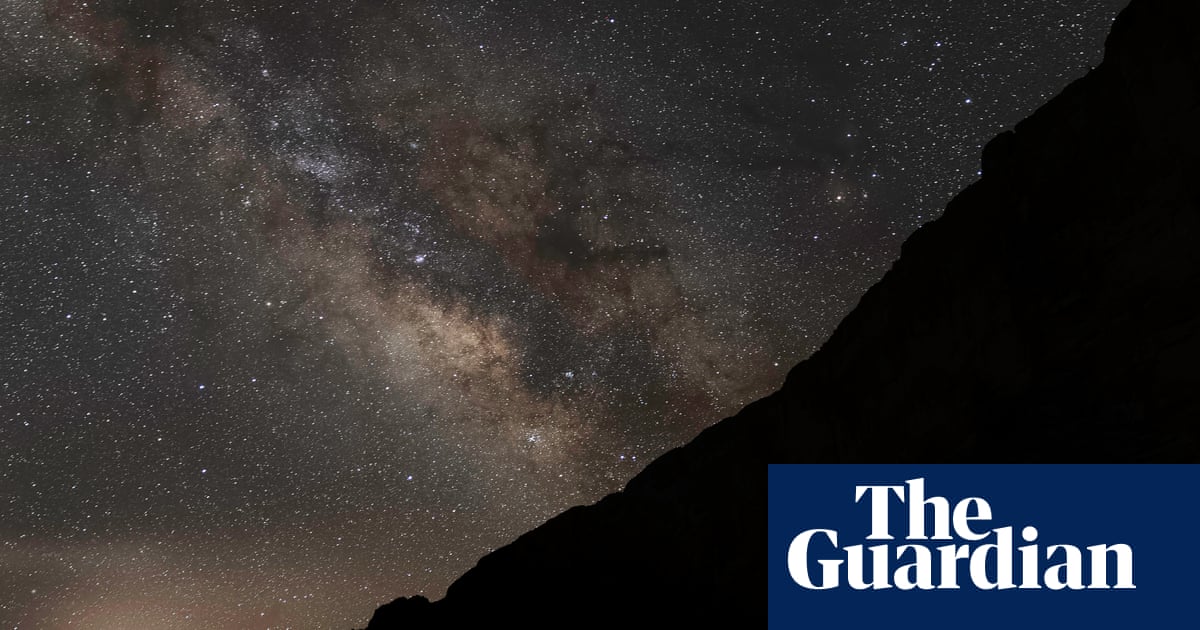TheTrump administrationappears poised to cut the US Natural Sounds and Night Skies Division (NSNSD), a little-known office that works to rein in noise and lightpollutioninnational parks, a task that is seen as a vital environmental endeavor.
Advocates say the division’s work is quiet but important – many plants and animals rely on the darkness, and light pollution iscontributing to firefly and other insect die-offs. The office led efforts to reduce light pollution at the Grand Canyon and snowmobile noise that drowned out sounds emanating from the Old Faithful geyser, among other initiatives.
“They’re a small but mighty program,” said Kristen Brengel, vice-president of government affairs for the National Park Conservation Association, which advocates for the national park system.
“When you think about it, the national parks are a full sensory experience … and there are scientists behind the scenes who are making sure that you have that world-class experience,” Brengel added.
The office is an example of what would be lost if theTrump administrationis successful in implementing deep cuts to the US National Park Service, shifting its focus from enhancing and preserving parks to simply managing visitors. The agency’s stewardship budget, which funds the NSNSD’s office of about 10 employees, is facing a proposed reduction from about $375m to $185m, and advocates say the office is almost certainly threatened.
The National Park Service’s Fort Collins, Colorado, office, out of which the NSNSD operates, was initially targeted by Elon Musk’s ”department of government efficiency” for closure. Court battles have tied up the Trump administration’s reduction-in-force (RIF) proposals, for now putting its National Park Service plans on hold.
“Our concern is that this little-known division will be decimated amid the cuts because its work is underappreciated,” said Ruskin Hartley, CEO of DarkSky International, which shares data with the NSNSD and has a similar mission.
The NSNSD and the National Park Service did not respond to requests for comment.
The NSNSD was established in 2000 with an aim to “protect, maintain, and restore acoustical and dark night sky environments” throughout the park system. In practice, that’s meant a combination of improving lighting in public parks, preserving darkness for wildlife, performing research and promoting dark sky tourism, which is booming, Hartley said.
Light pollution is increasing globally at about 10% annually, and around 60% of all known species are nocturnal and rely on the darkness, DarkSky estimates. Light pollution is particularly hard on migratory birds that rely on the moon and stars to navigate, and are drawn to bright light sources, and the light can also disrupt plants’ photosynthesis process.
The NSNSD in recent decades helped lead projects that aimed to improve lighting at many of the nation’s 430 parks, seashores and sites. It retrofitted 5,000 lights in the Grand Canyon national park with lower-watt LEDs that reduced spillage into the sky, and which turned the area into a certified dark sky park.
It also adjusted the lighting at the Mt Rushmore national park to reduce spillover, and improved lighting at the Gateway Arch in St Louis. The latter’s lights are now turned off during periods of heavy bird traffic in migratory season.
Sign up toThis Week in Trumpland
A deep dive into the policies, controversies and oddities surrounding the Trump administration
after newsletter promotion
The NSNSD also aims to ensure people can see the stars. For its purposes and those of DarkSky International, the definition of a “dark sky” is anywhere in which one can view the Milky Way, Hartley said. About 83% of the US population lives in an area where they cannot.
“You want to have lighting that protects and respects the natural darkness in those parks,” Hartley said. The NSNSD has also “pioneered” ways to measure, assess, and track changes in natural darkness over time, and it publishes papers on night sky quality, Hartley said.
The NSNSD’s sounds department helped resolve a 2013 controversy over snowmobiles at Yellowstone. Dozens of extremely loud two-stroke snowmobiles that would gather daily at the Old Faithful geyser were drowning out its sounds, scaring bison and generally degrading the experience, Brengel said.
Employees from the NSNSD measured the noise, determined the level at which natural sounds could be heard and wildlife would be less scared. It helped develop rules that required quieter four-stroke snowmobile engines, and limited their numbers to 10 at a time. The effort was seen as a happy compromise, Brengel said.
“They figure out ways to maximize natural sounds while still getting people out in the parks,” Brengel said. “It’s an innovative program that ensures the visitor experience stays intact.”
The fight over reduction-in-force proposals in court is important to the NSNSD’s survival, Brengel said, but her group is also alerting members of Congress to what the park service cuts would mean. Should the cuts go through, the park service would become a “visitors’ service agency”, Brengel added, and would be unable to protect cultural and natural resources, as is statutorily mandated. “We would sue,” Brengel said.
